Doseong (도성)
3.1Km 51 2021-03-26
15, Jahamun-ro 7-gil, Jongno-gu, Seoul
+82-2-738-8885
Sujebi jjambbong (Korean spicy seafood noodle soup with hand-pulled dough) is also a popular menu. This restaurant's signature menu is noodles in black bean sauce. This Korean dishes restaurant is located in Jongno-gu, Seoul.
Residencia Sangchonjae (상촌재)
3.1Km 0 2023-08-17
Jahamun-ro 17-gil 12-11, Jongno-gu, Seúl
Seochon Guest House [Korea Quality] / 서촌 게스트하우스 [한국관광 품질인증]
3.1Km 5504 2023-04-07
28-3, Jahamun-ro 7-gil, Jongno-gu, Seoul
+82-010-3345-9680
Seochon Guest House is located in Seochon, which is becoming a hot place for tourists in Seoul, and precisely on the road to Suseong Valley, whichis filled with interesting stores and is also well-known for Park Nosoo Art Gallery and the House of Yun Dong-ju (poet). Seochon Guest House is nicknamed ‘Jaeminangol (interesting village)’ after Baekseok’s poem ‘Yeowunangol’, with the aim of providing a visit full of interesting experiences. Passing through a garden and entering the main building, the unique charm of this hanok building, the staircase to get to the first floor from daecheong (main floored room), catches the eye of the visitors. In addition, the building is decorated with various stylish objects including paintings and Korean musical instruments. The terrace situated on the first floor offers an open view of the surrounding area including roof tiles of hanok structures and alleyways in Seochon. It is said that Korean novelist Yoon Hu-myeong also appreciated the structure of the guesthouse, saying, “It is an interesting place.” Built in the 1930s, the house, which has many storage places, was taken by the owner couple in spring 2014 as they were attracted by the house during their trip to Seochon. After the repair work, the ground floor of the house was opened for guests from January 2016, hoping that guests could share their daily experiences and stories with each other. The guestrooms and the main floored room on the ground floor are open to guests, with the exception of the first floor, which is used by the owner couple. The living room is equipped with books, a curved TV, and a table. The tasty meal, which is served in the kitchen, consists of rice and soup with six side dishes and is much loved by guests. The guesthouse offers a total of four rooms – Jae Room, which is the most Korean-style room; Mi Room, which has a combined style of a Korean-style room and Western-style room; Nan Room, which is an ideal room for meditation with a beautiful paper window; and Ahn Room, which is equipped with a veranda and a pretty flowerbed. Every room has its separate charm with various comfortable bedding to provide a quiet and cozy bedroom for guests in the middle of the city. Furthermore, the guesthouse holds a pansori (epic chant) performance twice a year. The owner started learning how to sing pansori to promote the Korean culture and tradition to foreigners. When a pansori performance is held, the owner offers traditional Korean snacks and drinks including sikhye (sweet rice punch), sujeonggwa (cinnamon punch), traditional sweets and cookies, and tteok (rice cakes) to visitors, tourists, and performers. Moreover, it provides cultural programs such as a Gukak (Korean classical music) experience, Korean traditional clothes experience, and making Korean food experience, as well as other activities with guests, such as trip to the city wall between Inwangsan Mountain and Bugaksan Mountain, and the Royal Palace Tour to Gyeongbokgung Palace, etc., as well as a trip to a traditional market.
Podam (포담)
3.1Km 150 2021-03-22
11, Jahamun-ro, 9-gil, Jongno-gu, Seoul
+82-2-733-0831
A store featured in Korean gourmet programs. This Chinese (cuisine) restaurant is located in Jongno-gu, Seoul. The most famous menu is dim sum.
Halmaejip (할매집)
3.1Km 365 2017-02-01
1-5, Sajik-ro 12-gil, Jongno-gu, Seoul
+82-2-735-2608
Not like usual Gamjatang (pork back-bone stew), Halmajip’s Gamjatang uses only bean sprout and leek to make a refreshing soup taste along with red pepper powder, for a spicy flavor.
STAY dayoff [Korea Quality] / 스테이 데이 오프 [한국관광 품질인증/Korea Quality]
3.1Km 8 2021-03-29
6, Jahamun-ro 1da-gil, Jongno-gu, Seoul
This hanok (traditional Korean house) is located behind Seochon Food Street, located near Gyeongbokgung Station on Seoul Subway Line 3. It is located only 5 min away by foot from the station. Opening the door brings one to a small garden, furnished with stones and moss on a corner, and the interior also speaks to the unique combination of a modern hanok with contemporary sensibilities. The building is divided into the main building and annex building, with the former having two queen bedrooms connected by a living room and kitchen as well as two bathrooms.
The annex building is the hidden jewel of STAY dayoff, which houses a bathtub and a sauna facility behind a beautiful window wall. When the windows are opened, it is like being in an open-air bath overlooking the garden and the hanok. The standard occupancy of the house is 4, with a 10% discount available for guests staying for more than 2 nights on weekdays, and towel replacement and cleaning services are offered for guests staying for more than 4 nights.
PANE PASTA - Jongno Branch (빠네파스타 종로)
3.1Km 148 2021-03-19
11, Jahamun-ro, 7-gil, Jongno-gu, Seoul
+82-2-777-6556
A specialty restaurant serving pizza and pasta dishes baked in an authentic Italian wood-fired oven. The representative menu is margherita pizza. This Western cuisine is located near Gyeongbokgung (Government Complex-Seoul) Station, Seoul.
Legación Rusa de Corea (서울 구 러시아공사관)
3.1Km 17910 2022-03-04
Jeongdong-gil 21-18, Jung-gu, Seúl
Rolling Hall (롤링홀)
3.1Km 3890 2021-03-17
Eoulmadang-ro 35, Mapo-gu, Seúl.
Rolling Hall es un espacio cultural establecido con la finalidad de formar una aproximidad más cercana entre público y artistas. Aquí se presentan conciertos, presentaciones de distintos tipos de música como rock, hip-hop, jazz, baladas, pop, etc. y los espectadores pueden unirse con los músicos para disfrutar aún más el espectáculo. Además, se puede sentir también el ambiente vivo de un club caliente de Hongdae, y los equipos de sonido de primera aumenta la calidad de los artistas. Las instalaciones de la sala también son aptas para realizar otros tipos de eventos no musicales.
Iglesia Católica Yakhyeon de Seúl (서울 약현성당)
3.1Km 26328 2023-02-22
Cheongpa-ro 447-1, Jung-gu, Seúl
La Iglesia Católica Yakhyeon fue fundada como consecuencia de la libertad religiosa proclamada en el 23º año de reinado de Gojong (1866) y su subsiguiente incremento de la población católica. En 1891, el padre jefe de la Catedral Católica de Myeongdong, llamado Doucet, preparó un terreno en Hap-dong. El vicearzobispo Coste estuvo a cargo del diseño y construcción, y finalmente el edificio fue completado en 1892. El nombre de la iglesia proviene de “Yakjeonhyeon”, que significa colina de hierbas medicinales. Eso se debe a que el lugar donde la iglesia está situada era un cerro cubierto de plantas terapeúticas. Luego, “Yakjeonhyeon” fue acortado a “Yakhyeon” y así se denominaba a un área cercana a la cuesta entre Malli-dong y la Estación de Seúl. La Iglesia Católica Yakhyeon fue el primera iglesia de estilo occidental en Corea. Es la arquitectura gótica con la estructura cruciforme de 12 metros de ancho y 32 metros de largo. Asimismo posee ventanas arqueadas y una puerta ojival.
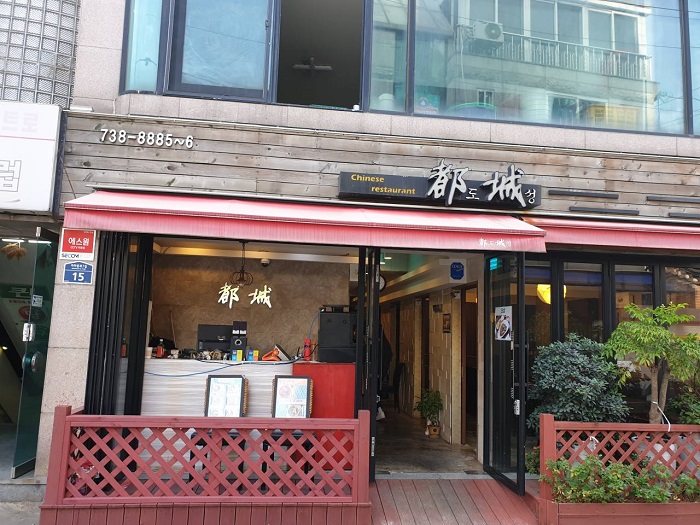

![Seochon Guest House [Korea Quality] / 서촌 게스트하우스 [한국관광 품질인증]](http://tong.visitkorea.or.kr/cms/resource/41/2447241_image2_1.jpg)
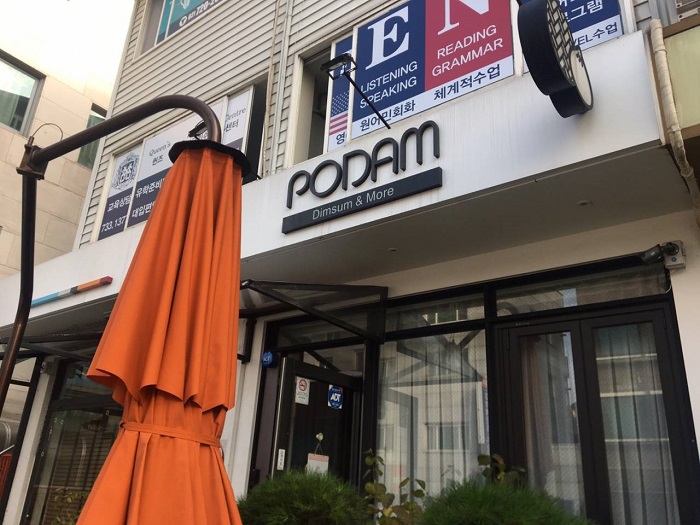
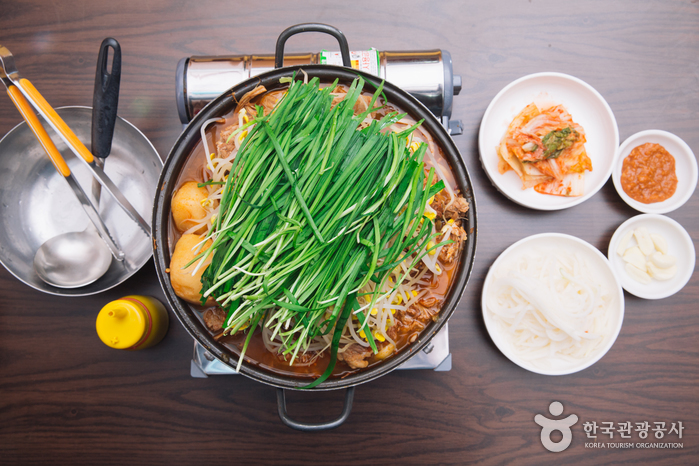
![STAY dayoff [Korea Quality] / 스테이 데이 오프 [한국관광 품질인증/Korea Quality]](http://tong.visitkorea.or.kr/cms/resource/96/2707596_image2_1.jpg)
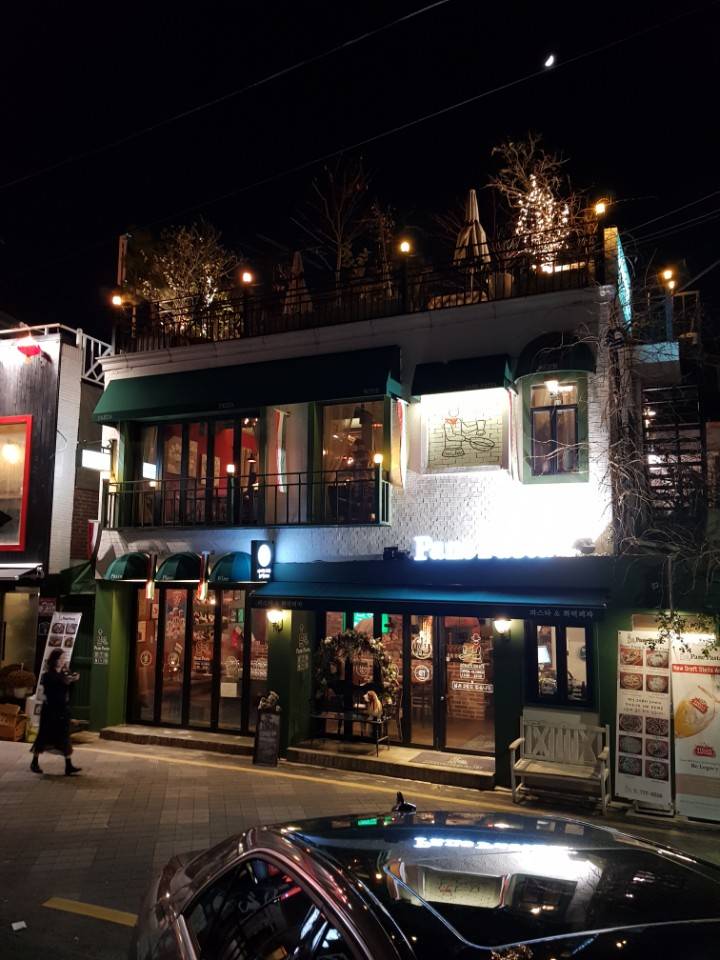
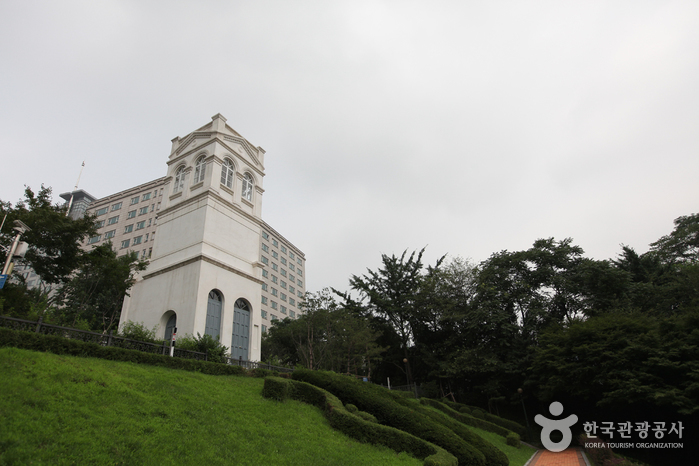

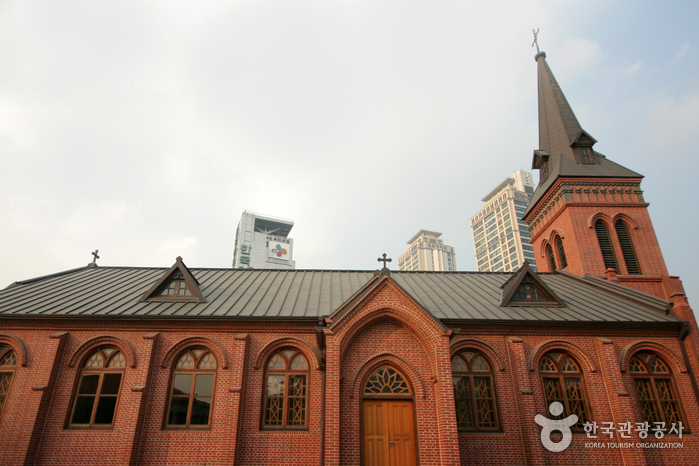
 Español
Español
 한국어
한국어 English
English 日本語
日本語 中文(简体)
中文(简体) Deutsch
Deutsch Français
Français Русский
Русский